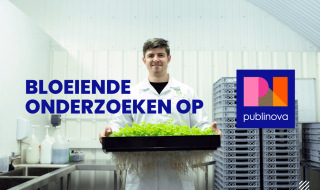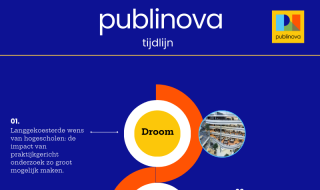Publinova
Raising the visibility of practice-based research together

Advantages
Practice-oriented research findable and accessible
A web of research information
Do you have a question about Publinova? Get in touch.
Practice-oriented research findable and accessible
Universities of applied sciences conduct a lot of practice-oriented research. This contributes to the renewal of education, innovations in business and social organisations. The results produced by this research are varied. In addition to articles, these include prototypes, protocols, models or teaching materials. We want to make all these results from practice-oriented research more findable and accessible to a wide audience.
Ambition: a web of research information
We want to make it easy for researchers and professors to share information about and knowledge from Dutch practice-based research on this central national platform. In this way, we make this material available to colleagues at other universities of applied sciences, but also to a wider audience, such as journalists and anyone interested in this. This information and knowledge should then also be easily shared on other, existing platforms.
Publinova originated from a project commissioned by 14 universities of applied sciences. For this, we collaborated with the HBO Knowledge Infrastructure, the Association of Universities of Applied Sciences, Regieorgaan SIA and SURF.Since October 2023, Publinova has been live, establishing it as a national platform with various functionalities and applications, with the aim of creating an insightful and open web of research information. This contributes to the open science ambitions expressed by all universities of applied sciences. To reinforce this ambition, the sector decided in July 2024 to embrace Publinova and jointly fund it.
Want to keep up to date with developments?
Create once, publish anywhere
Publinova embraces this principle. We strive not to burden researchers with extra tasks and use links to source systems. At Publinova, we believe in making efficient use of existing information, for example by joining exchange standards and retrieving relevant data from colleges. This enables us to apply the principle of "create once, publish everywhere" and achieve seamless dissemination of research results.
More information?
- Does your institution want to join Publinova? Then check out how to join; there are conditions and costs involved.
- Keep an eye on our information sessions.
- Schedule a 1-on-1 meeting with Sanne Tonkens (product manager).
Rates
View the tariffs of this service.
SURF Services and rates 2026
View the tariffs of this service.

